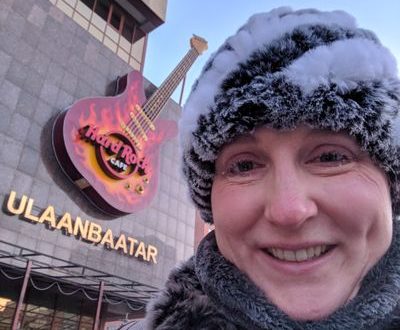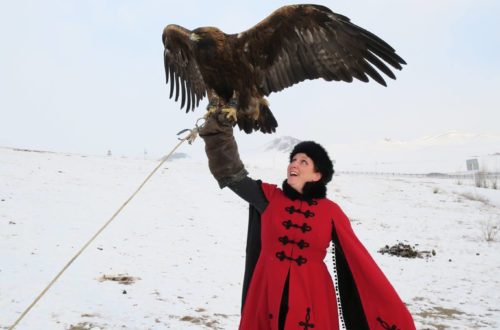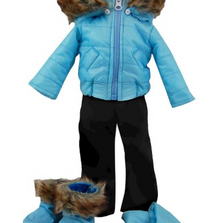Content note:
Just FYI, I do most of my writing on the train. The chromebook has a text editor, but not spell check or autocorrect. So if you spot some bad grammar, punctuation mistakes, fully misspelled words, or notes to myself that I forgot to remove like this: (?), that’s why.
Second content note:
This is new for me, writing a blog. And it is super weird, like screaming into the void. There’s no feedback, so I have no idea if anyone is reading it. So…if you have any comments, please hit the contact button. It just sends an email to dr_tina_white at yahoo. Or you can email there… or text me, I have free texting. Or respond on facebook or hipchat, however we usually communicate. I just keep putting stuff out there.
Discussing politics:
It has been very interesting in all three countries to listen to the guides talk about the history of their countries. I am, by no means, an expert on Chinese history, Mongolian history, or Russian history, and I carry with me only my own preconceived notions developed from my education in the US, which is, as all history education is, incredibly biased. Having grown up in the South and then studied in Germany, I have definitely been to my fair share of places where the history contains some very shameful events, and people don’t like talking about it. In the South, there are attempts to diminish and hide that part of history, and in Germany, there is a feeling of apologetic resignation. So I found it fascinating to listen to people in China and Russia talking about the various forms of government their countries had experienced. They all have totally avoided any conversation about current politics, naturally. But hearing about the cultural revolution in China and the effects of communism, from someone who just bluntly describes it, without judgement or apology. Just yeah, this is what it was like here and now it’s different. The Mongolian tour guide was very particular to specify that he didn’t think the new normal is better, just different.
I really found it interesting listening to people explain how different cultural changes came about and compare that to how we are taught things happened. It’s very different. In China, seeing the interactions of people with the government was interesting. There were police officers everywhere. Every bus and every subway station, walking the streets. But they weren’t heavily armed, intimidating. It actually felt kind of comforting. I watched as my guide laughed and chatted with the officer on the bus we took to Tiananmen Square. It was also strange that she explained to me that Beijing is very safe. “Just look around,” she said, “there are cameras on every corner. Very safe.” And there are. Every street corner and lamp post has 4 cameras, one pointing each direction. I don’t know how anyone processes that much information to do anything about it, but they are there. And I know that it would not make me feel safer in the US if I suddenly noticed that there were large cameras run by the government on every corner. In Mongolia, hearing about multiple governmental changes, revolutions even, that were completely (from what the guide explained) non-violent. He did mention the state violence against people who dared practice religion during the communist period, and much of the oppression during that time, but the transition seems to have been, relative to many European transitions from communism to democracy, peaceful. And then arriving in Russia, hearing about the Taltsy museum… first learning about the history of Russia outside Imperial Russia and Communist Russia. Then, as we arrived in Irkutsk, the guide pointed to different buildings. These are Stalinist buildings. These are Kruschev buildings and Brezhnev buildings. There is a calmness to it, not like visiting a plantation house museum and having to explain with some amount of shame and awareness of the atrocities here, what the slave quarters look like, but just matter-of-fact description of these different periods. He talked about the Communist period and their destruction of all churches and giving everyone essentially free housing as if those things were equal. Then he talked about the war, WWII, the loss of life experienced in Russia. Here there is reverence, solemnity. And then he talks about how, when the soviet union fell, the apartments were given to the people who lived in them and people were allowed to own homes for the first time. And since then housing prices have gone up and no one can afford housing unless they were the ones who were given housing during that time. But there is never any anger or emotion to the story. Just how things are. I’m not sure I’m even describing it correctly, the nonchalance with which people discuss these things. But I had to face my own personal perceptions, my internal tension at seeing hammer and sickle, red blankets on communist tombs, reverence to things we have been taught to fear and hate, while people who lived in it describe it without those feelings.
Fashion:
Before I left, the two things I was informed of were that women always wear fur coats in Russia, and that they love wearing knee-high pointy high-heel boots. One of the other girls I met on the train said she has a Russian friend who asked her “Does your coat have dead animals on it? and your shoes?” Yes, she made sure to have dead animals on her as much as possible. Of these 2 things, most people have encouraged the wearing of fur, as there is nothing as warm as fur (and the women here have amazingly beautiful fur coats), but everyone says that, under no circumstances should a non-Russian person try to wear the spiky heels in the snow and ice. Russian women are uniquely capable of this feat of physics and you can only try it at your own peril. Now this one I am going to say is a myth. From the several miles a day of walking I planned to do, I was not going to attempt to wear heels. However, while the Russian women are almost exclusively clad in black leather knee-high boots, I have watched a shocking number of ladies wipe tf out. Yardsale across the sidewalk. I have nearly fallen many times myself, as the snow packs into the treads of my boots and becomes like ice on the bottom. The best solution is to kind of shuffle around on hard surfaces like concrete sidewalks, almost like skating. Walking in the snow is easy to stay balanced, but hard work, like walking through sand. I haven’t seen a lady try to walk through the snow in heels yet. Pretty sure it isn’t super efficient.
Children are creepy:
While I had a lovely chat with 2 little Russian girls in Irkutsk, one of the guys on the train had a different story from outside Beijing. He was taking a train or subway and a little girl looked up at him and said, with a perfectly American accent, “Follow the yellow brick road”. He responded to her, telling her “Wow, that’s really clever” (he’s British). She simply responds “Follow the yellow brick road.” At this point, it’s pretty creepy. Like, am I hallucinating? But she had seen the movie and that was all she had memorized. So she continued to repeat “Follow the yellow brick road” at him as he was like “yeah, ok, great”. And her parents were so proud, like look at our little toddler having a full-on English conversation!
Dressing for the cold
Before I left, everyone was so concerned about the cold. Was I going to freeze to death? Did I pack the right things? Clearly I can’t take a winter coat purchased in California. You have to buy one there. You need this, you need that. As if there isn’t an entire internet of people who have done this before with lots of information about how to pack and what to do about the cold. When faced with these questions, my general response is: People live there. Not just people. Families. They have children. Children put on their snow boots and walk a kilometer in the snow and play on the playground in the snow and I am tougher than a child. So I’m sure I’ll figure it out. The people I met on the train had similar stories….why go in the winter? What is wrong with you? My favorite response to this came from Artem, who told me, “Anyone can go in the summer.”
People go to antarctica and people do all sorts of crazy things and this, while it seems extreme to some of us, is everyday life for others. And so far, my layers and winter coat that I purchased online have worked out splendidly. I’ve honestly been hot far more than I’ve been cold. Which is good. I packed enough layers. Success! On the days I plan to go outside for an extended period, like the one in Mongolia, I put on 2 layers of thermals, then a pair of tights, sweater, skirt, and my black puffer coat. The red coat I bought can go over the black one, but I didn’t wear it in Mongolia because I didn’t want to attract attention. With those things and a hat/scarf/gloves, I managed to walk around for 3 hours in -25C, which will be the coldest temperatures I face on this trip. Now, it is tedious. I am actually tired of taking an hour to get dressed in the morning. Finding all the pieces and layering them in the right order. I can’t imagine living here and doing it every day. But I don’t think I would. If I were working an office job, I’d just put on normal clothes and a heavier overcoat and get from car to office. It’s only on the days I’m out in the cold that I need that many layers.
I’ve also learned to just go without makeup. For the first 2-3 days in China, my face staged a rebellion. The cold winter wind and dry air caused my face to just crack and peel. It’s gross. Sorry for sharing. But I’ve upped my lotion regime and that’s better now. But after the first day or two of putting on make up and then pulling on and off turtleneck sweaters, I gave up. I wear make up more often while traveling because I actually take photos of myself while traveling. But this time, it’s a waste of time. Walking in Mongolia, as the frost builds up on my eyelashes, cute frosty eyelash selfie! Then…the frost gets heavier and heavier until you blink one time and the frost touches your cheek, melting immediately, and now you look like you have tears streaming down your face.
Also… my hair. If I am going to leave one thing at home when I travel, it’s a hairbrush. I don’t know why, as I use one every single day, but I just can’t ever remember to pack one. The number of times I have had to buy one once I arrive somewhere has been numerous. I need to get a retractable leash and strap one inside my bag. So this trip, with the 200 times I packed and unpacked my bags, I made sure to pack a hairbrush. I was downright pleased with myself for remembering it. But, alas, it is most likely somewhere in Beijing and I have yet to find a store that sells them. My hotel in Mongolia had a comb in the toiletries set, so I’ve been using that as a stop-gap. But I would really like to find one soon. I dont know that it particularly matters, as it’s cold enough I am always wearing a hat…but I would like to have one.
Pushing myself
Well, it seems that I finally got what I had wanted. With a full free day in Listvyanka to plan for myself as I see fit, I went all in. Tired of being told I was too delicate, and still being asked every time I am about to go out if I have my hat and gloves, I set out to make my own adventure. I scheduled the dog sledding months ago, and that was way fun. Anyone would want to do that. But I had heard of the Russian banyas and wanted to do that for just as long, without any way to plan it. Of the few hotels that say they have a banya that is actually open right now, when no tourists are in town, the only one that responded to my request indicated that their ‘banya’ is actually a Finnish sauna. I wanted to find the full Siberian banya experience. So when I checked in to my guest house, my driver indicated that there is a real banya next door and I could ask Nikolai to set it up for me.
The next time I saw him, at breakfast the next day, I asked about the banya. It seemed like a great idea. He immediately suggested 6 p.m., the perfect time for a hot, relaxing spa treatment, just as it’s getting too dark to keep wandering and I’m all tired from the day. But between the awkwardness of it being very personal 1-on-1 treatment, not a professional/clinical type spa treatment, and the long periods of sitting for 5-10-minutes at a time, trying to make conversation while barely dressed, it was not in any way a relaxing day at the spa. I am so glad that I tried it, and I definitely enjoyed it and will remember it forever. But it really tapped into all the things that would make me uncomfortable on a daily basis anyway. I have long had social anxiety. I like people. I just can’t do small talk. It makes me so awkard and nervous. So talking about the weather is torture. Once I know someone, that goes away. I have lots of friends and I can chat with them for hours with no problems. But I don’t know where that change happens from anxiety-inducing to friends. So sitting alone with a person I don’t know is my own personal torture. This was definitely the first point on my trip where I was outside my comfort zone. And it was a full hour of being outside my zone. An hour of just moving forward, shutting down my brain’s pleas for alone time and quiet and pushing through. It’s not him. It’s definitely me. He wasn’t at all creepy or anything. I’m just a very high-stress person. I like to watch people and only enjoy interacting with a few.
Afterwards, once I finished dinner and came back to my room, was really the first time on this trip I felt like I was ready to go home. Like, ok, I have adventured and seen something that was amazing and different and I feel like I am good now. Maybe I want to be comforted. Again, I have to shut down my brain because that just isn’t an option right now. And I am still certainly looking forward to the next couple of weeks. I am just noticing. It took a little over a week…and 3 countries and lots of self-induced adventure, before I felt like I wanted to go home. I remember being a sophomore in college and introducing my then-boyfriend to one of my high school teachers. Without hesitation, she offered him one piece of advice: “Don’t ever try to tie her down. She’ll run.” I was a bit confused, unsure if I should be offended or proud. We aren’t often taught to embrace our independence. But I think I finally understand a part of me that perhaps she saw all along. I have some internal drive to go out there and try things and experience things and don’t handle being denied that. But given that opportunity, I’m quite happy to come home.
–Side note. When I traveled to Germany for school, I now tell that story as some great triumph of will…19 years old, first time on an airplane and straight to another country. And surely all of this is true. But I was terrified. I cried. I considered every option to get out of going without having to admit I chickened out. 6 months is a long time to leave home, to leave relationships and school. But that’s how I got the opportunity to go: the girl who had gone before me was supposed to stay for the whole school year. She came home at Christmas and wouldn’t go back. So they needed someone to go. For the first month, maybe 2, of that trip, I wasn’t myself. I didn’t explore. I went to school and did my work and shopped at the grocery store and ate the soups I made for myself. But I wasn’t happy. It took time for me to find my groove then. I was much less comfortable being alone. But I learned. That’s where and how I learned. And I made friends. I met so many cool people there. I have never regretted going, and I would have forever regretted giving up. It might have changed the course of my entire life.





